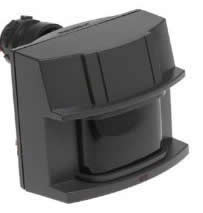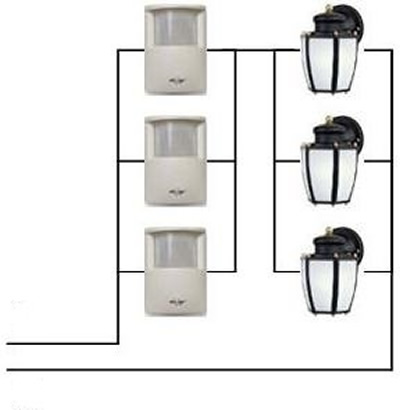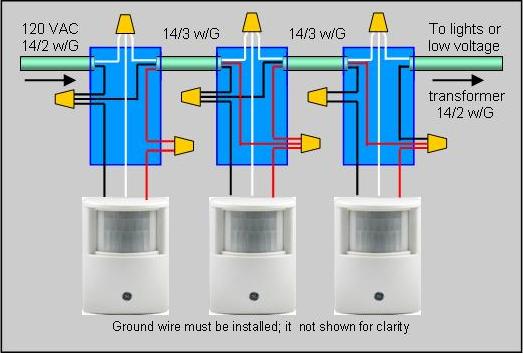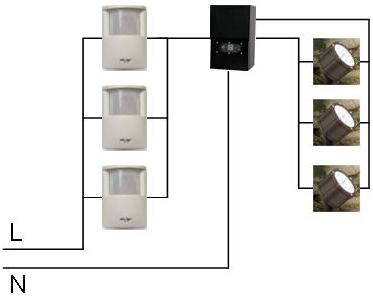
Figure 1 - Motion detector or sensor
In order to have more than one motion sensor or motion detector turn on the same group of lights it is necessary to wire the motion sensors in parallel with each other, in the same manner as the lights are wired.
As long as at least one motion sensor is detecting motion, the lights will remain on.
Each of the motion sensors must be individually rated to handle the total power load of all of the lights that you wish to turn on. As an example: if you have 3 motion sensors and each motion sensor is rated for a maximum of 500 watts then the total amount of wattage that you can turn on is 500 watts – not 1500 watts.
Figure 2 is a line drawing of the wiring of 3 motion sensors to a group of lights and Figure 3 is a diagram of the actual wiring connections. You can have as many motion sensors as you want in parallel.

Figure 2 - Schematic wiring diagram for multiple motion detectors with 120VAC lighting

Figure 3 - Drawing of actual wire connections for installing multiple motion sensors
You can use the same basic multiple motion sensor circuit to turn on low voltage lights by switching the input power to the low voltage transformer rather than the individual lights, as shown in Figure 4.
Note: The neutral (white) wire must be connected to all of the motion detectors, as shown in Figure 3 in order for the motion detector to operate.

Figure 4 - Line drawing for multiple motion detectors with low voltage lighting
This wiring configuration does not change any of the parameters for the calculations that you still must do to determine the wire gauge for the low voltage wiring.
